These Prehistoric Ocean Animals are Still Around Today
Evolution has favored these prehistoric ocean critters to help them stand the test of time
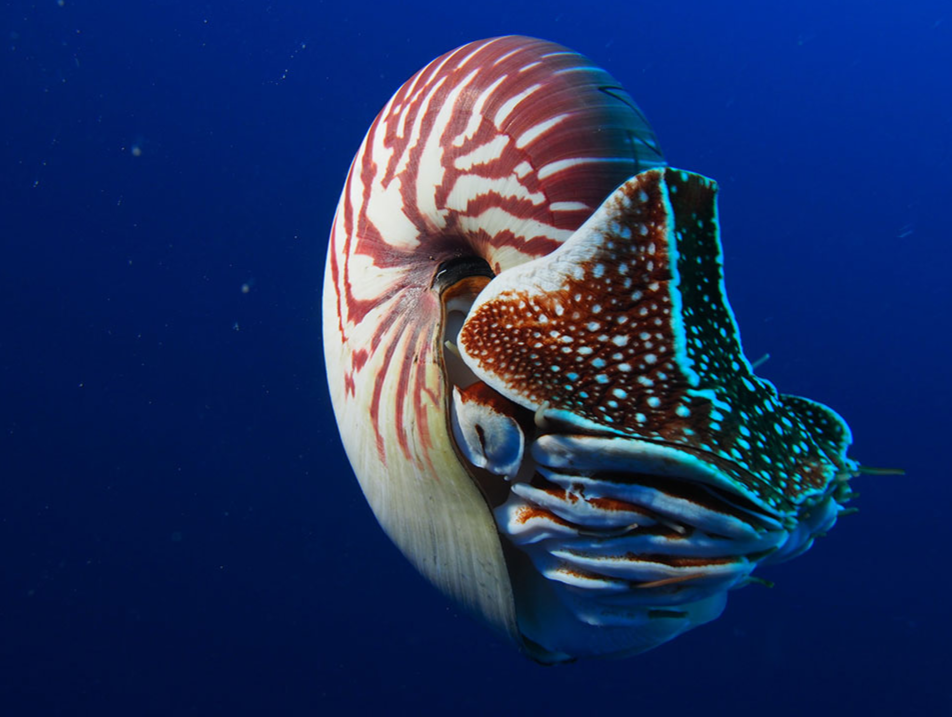
Fossils are preserved accounts of history and the organisms that have walked (or swum) the Earth long before us. We have learned so much from fossils, particularly those found in the vast ocean, that have seemingly decoded the necessary mechanisms to withstand extinction for millions of years. As time passes, however, the world continues to change. With the warming of waters, new substances that pollute land and ocean, overfishing and atmospheric change, even these ancient survivors are now at risk.
23 million years old—Pygmy right whale
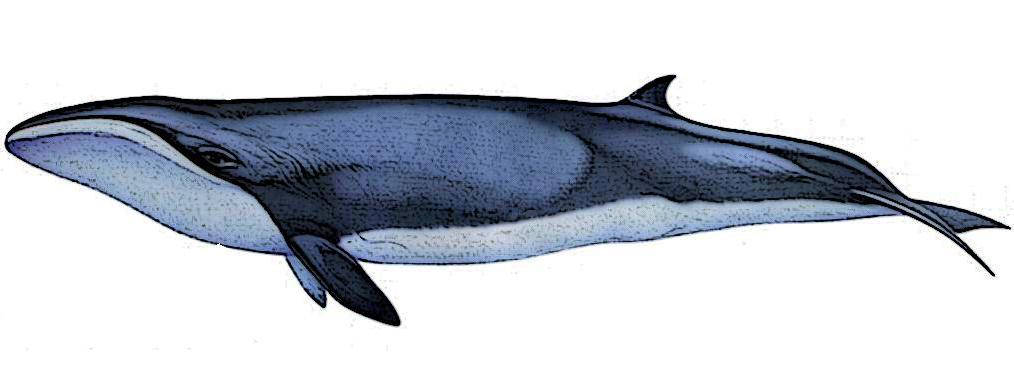
The pygmy right whale is an elusive creature, shrouded in mystery as one of the rarest whale species today—spotted at sea only a few dozen times. Due to the rarity of live specimens and fossil evidence, scientists haven’t been able to determine much about what they eat, their reproduction and overall behavior.
Get Ocean Updates in Your Inbox
Sign up with your email and never miss an update.
What we do know about pygmy right whales is that they are considered one of the smallest whales, measuring up to around 21 feet in length. They live in the open ocean and are generally believed to be confined to the Southern Hemisphere’s cool waters. Besides their small size, they are characterized by an arched, frowning snout.
With a recent discovery of pygmy right whale fossils in Japan and Italy, researchers suggest that the whale emerged from the baleen whale family between 17 and 25 million years ago. Others still argue whether or not the whale is a descendant of a family called cetotheres—a group that existed 23 million years ago. Regardless of their exact lineage, the pygmy right whale is again at risk. Just as the fossil evidence from Italy and Japan suggests, these whales are not made for warmer waters. As our ocean continues to warm due to climate change, the pygmy right whale’s time on Earth may be in jeopardy.
80 million years old—Frilled shark
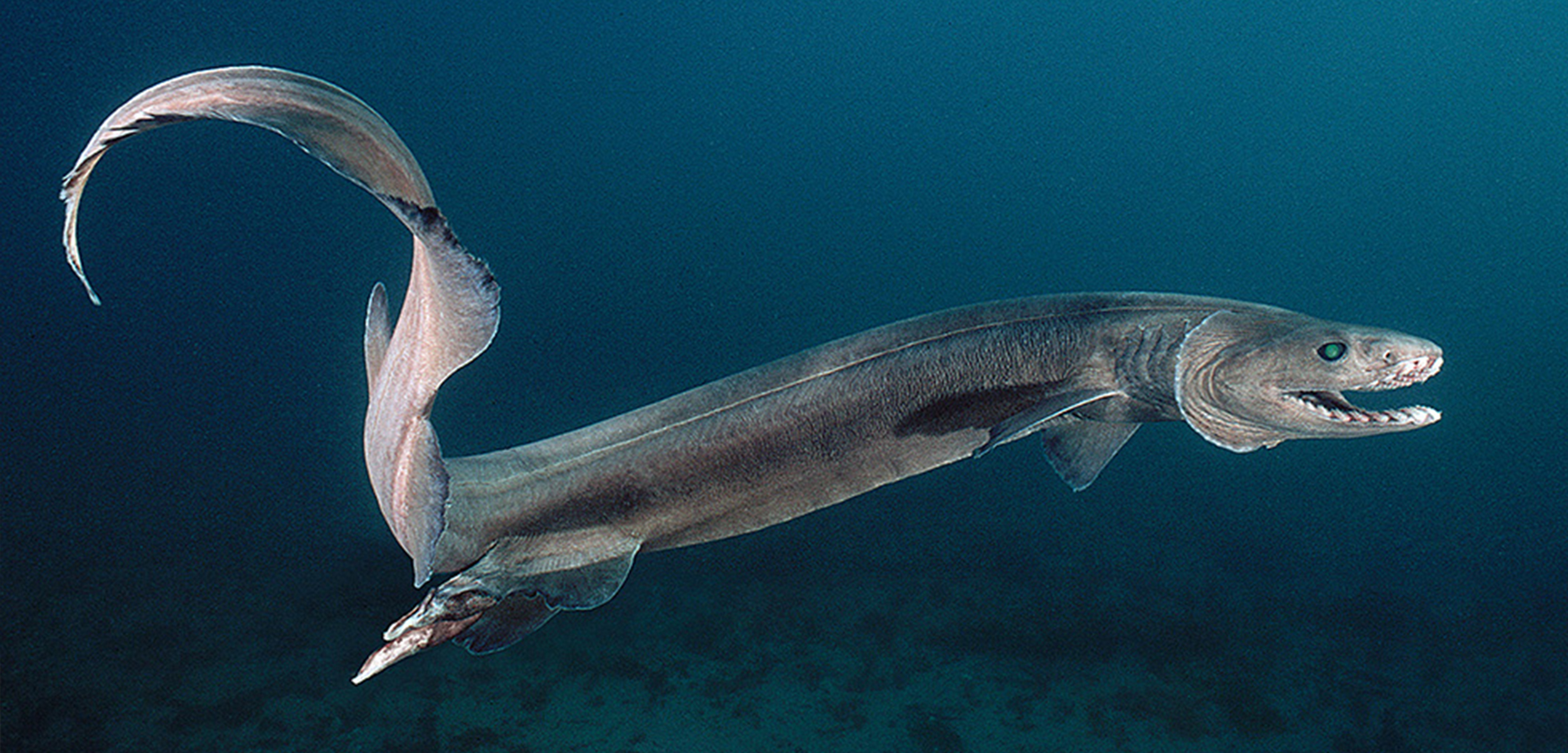
Found in the dark abyss of the deep sea, frilled sharks have been lurking in the shadows for approximately 80 million years. During that time, these fish have changed very little.
Frilled sharks were dubbed so due to their six gills that appear “fluffy,” and although they are considered cousins of great whites and hammerhead sharks, their relation could not be more distant. Their strange characteristics are more reminiscent of a snake than shark. Averaging 300 pin-sharp teeth and a hinged jaw, frilled sharks are believed to quickly lunge for their prey—devouring deep sea fish and squid half their size—whole.
Though the frilled shark may seem capable of defending itself, the International Union for the Conservation of Nature (IUCN) has made note that with the increase of deep water commercial fishing, there is an increase likelihood of bycatch.
360 million years old—Coelacanth
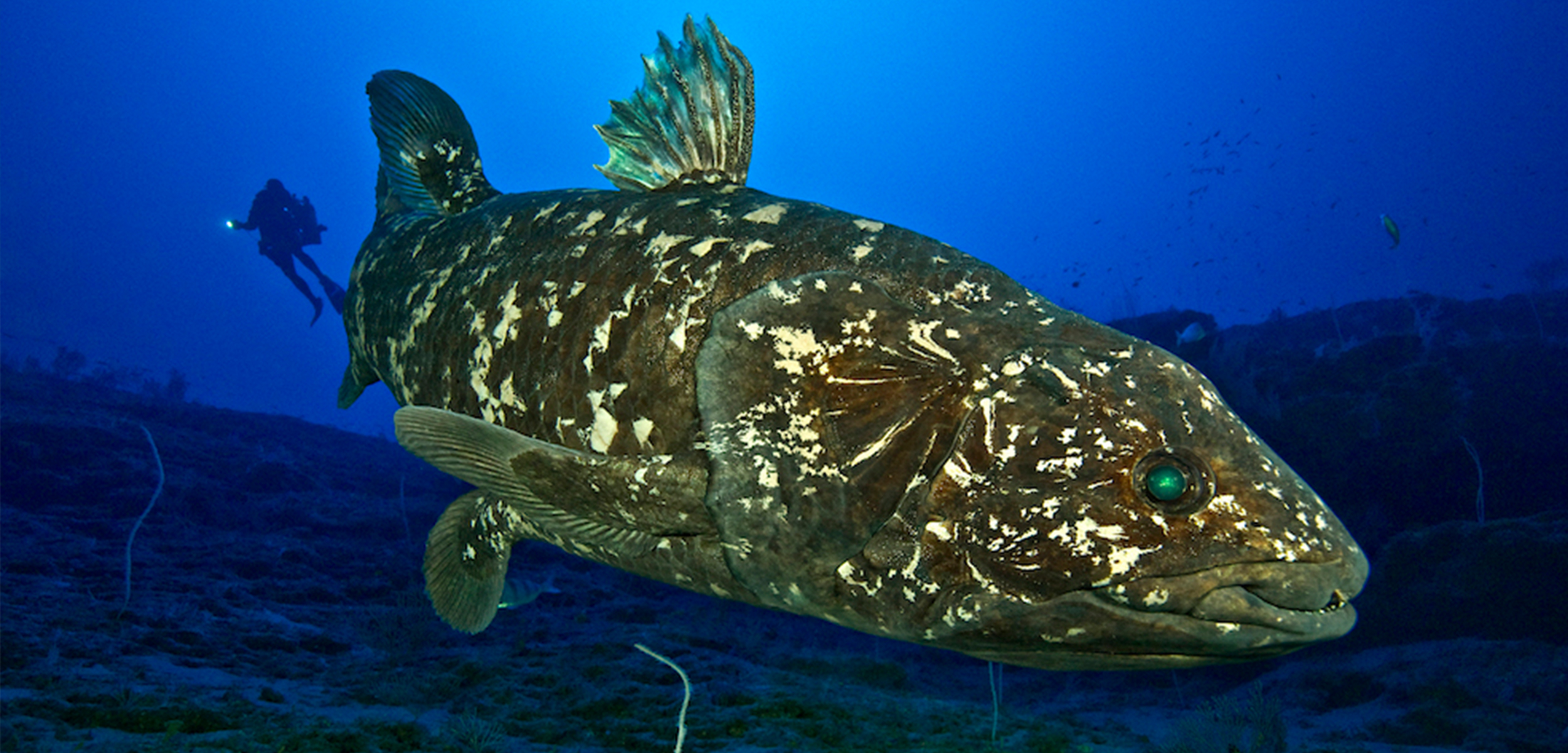
Thought to have gone extinct 65 million years ago (along with the mass extinction of dinosaurs), the coelacanth (pronounced SEEL-uh-kanth) was rediscovered in 1938. The coelacanth is predicted to belong to a lineage that has been around for 360 million years and it is a fish unlike many others. Growing up to six feet or longer, the coelacanth can live for longer than 60 years and is considered a member of the Osteichthyes (bony fish) taxonomic group that feeds on cephalopods and on other fish. What sets them apart, however, is their strange connection in the evolutionary process with terrestrial, four-legged amphibians. Their four, fleshy fins extend from their body and propel them in a way that resembles the alternate movement of fore and hind legs.
Additionally, coelacanths possess a hinged joint in their skull (to allow them to open their mouth wider) and a rostral organ (an electrosensory organism that allows them to detect prey), both of which are characteristics that are no longer found in vertebrates today.
There are many more characteristics that set coelacanths apart from other fish, but with port construction, bycatch and climate change, these ancient fish are again at risk of extinction.
360 million years old—Lamprey
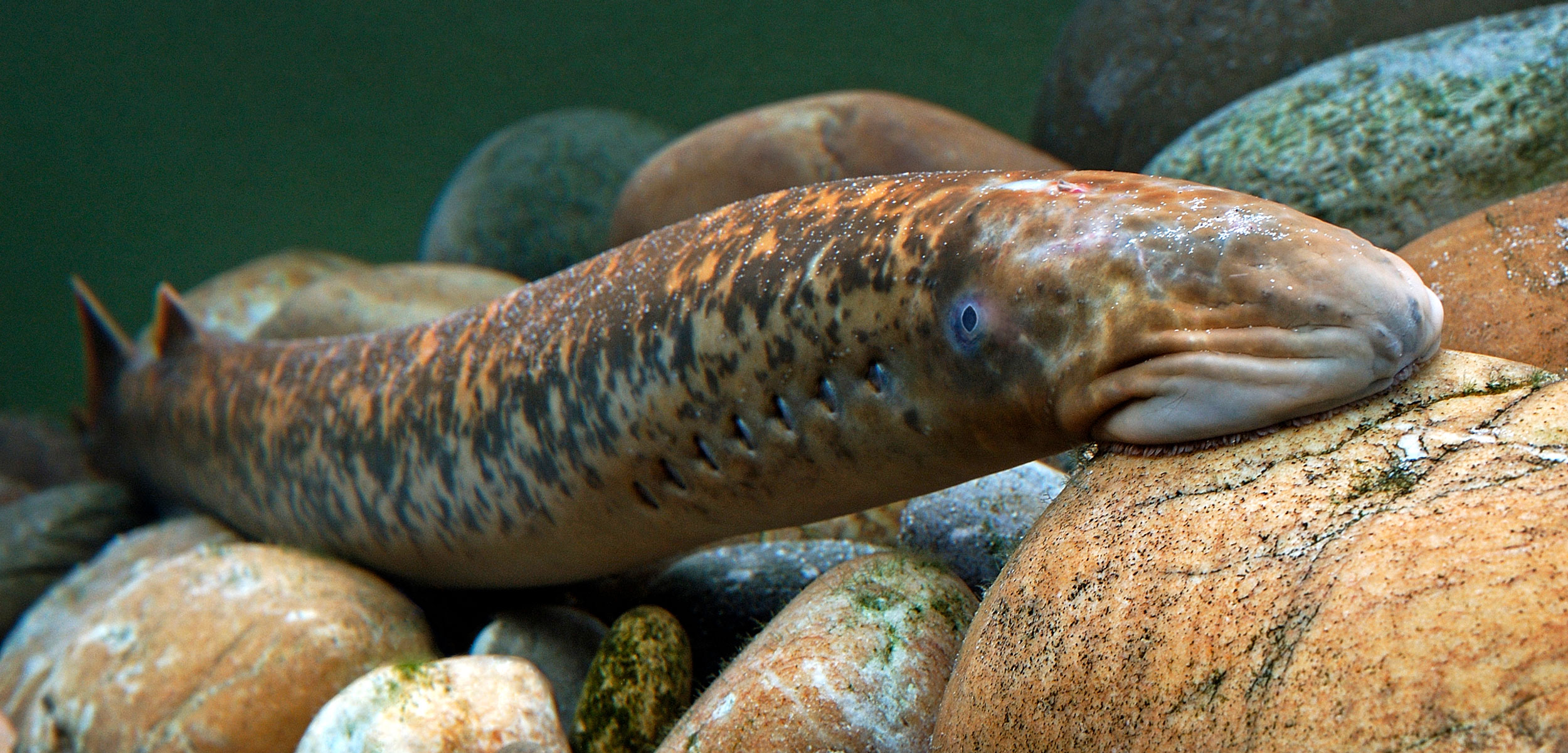
The lamprey is a parasitic fish that has survived four major evolutionary extinctions in their 360 million years of swimming the ocean—though they are now mainly confined to the Atlantic Ocean and (a non-native population) in the Great Lakes. Similar in structure to leeches or eels, they do not possess bones, but instead have a cartilaginous skeleton with a single tail fin, and feed off other fish by sucking nutrients from their bloodstream.
While lampreys lack jaws, they use a large suction-like mouth filled with tiny horned shaped teeth and a razor-sharp tongue. Though the teeth can look intimidating, it’s the tongue you need to watch out for. The teeth simply help the lamprey attach to its victim while the tongue does most of the work—scraping away enough scales to reach the soft flesh of the fish.
But don’t let these bloodsuckers fool you. Lampreys were once held in high esteem as an English food of kings for thousands of years. Currently, they are important to the work of scientists as they are crucial to understanding how the first backboned animals evolved and, with their remarkable ability to heal from severe nerve damage, how spinal cord injuries can be healed in humans.
Since lampreys are anadromous fish (fish that live in fresh and saltwater), they play a major role in healthy estuaries—transporting nutrients from the ocean to freshwater environments. Due to increased human disturbances, lampreys are severely declining, which has the potential to affect entire ecosystems.
450 million years old—Horseshoe crab

The horseshoe crab is one of evolution’s ultimate survivors, dating back 450 million years—outliving the dawn of dinosaurs and five mass extinctions. They’re also not actually crabs. The horseshoe crab is classified under subphylum chelicerata, along with scorpions, spiders and ticks.
The anatomy of a horseshoe crab consists of three parts—the front shell (prosoma), the back shell (opisthosoma) and the tail (telson). Although you may think they are poisonous or can sting you, the horseshoe crab is practically harmless, using its tail as a rudder and to turn itself over if flipped on its back. Horseshoe crabs also have eyes everywhere—10 in total!
Besides their good looks, horseshoe crabs are important to the biomedical industry, where their blue blood is used to help identify bacterial toxins. If you’ve ever had an injection, vaccination or surgery, you can thank the horseshoe crab for ensuring its safety.
Not a rare sight by any means, horseshoe crabs are found on the eastern U.S. coastline— you may have seen a horseshoe crab if you have visited Florida’s beaches. During the devastating 2018 red tide event in Florida, hundreds of horseshoe crabs washed ashore. Though they were once amazing at adapting to their environment, they are now facing extinction due to climate change, habitat loss and over-harvesting.
500 million years old—Nautilus
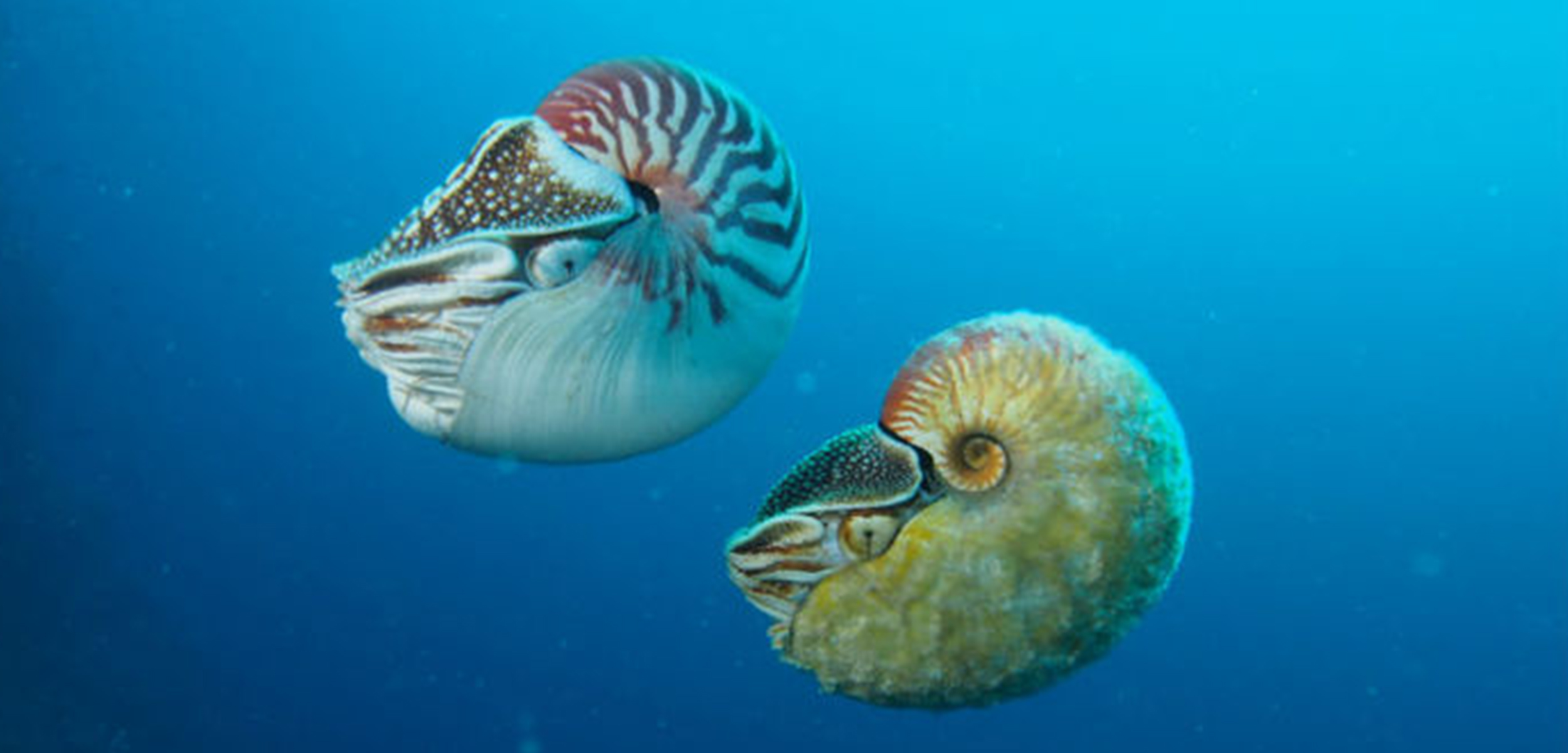
Dominating the ancient seas 500 million years ago, the nautilus was a mollusk that thrived when the continents were still forming. Originally, there were 10,000 different species—today, only a few survive in the western Pacific Ocean and coast of the Indian Ocean.
Chambered nautiluses hunt for fish, crabs and lobsters by using chemosensors on their 90 (!) retractable, sucker-less tentacles to pick up food scents. They use their beak-like mouth to pry open tough shells and an internal tube (the hyponomoe) to regulate the amount of water and air in their shell—mastering the art of buoyancy so well that we looked to the nautilus to inspire the submarine (aka NAUTILUS).
With gorgeous shells that come in an array of colors and patterns, the nautilus is at risk of overharvesting. Additionally, they are considered a highly vulnerable species due to their low reproductive rates, slow growth and late maturity.
500 million years old—Sea jellies
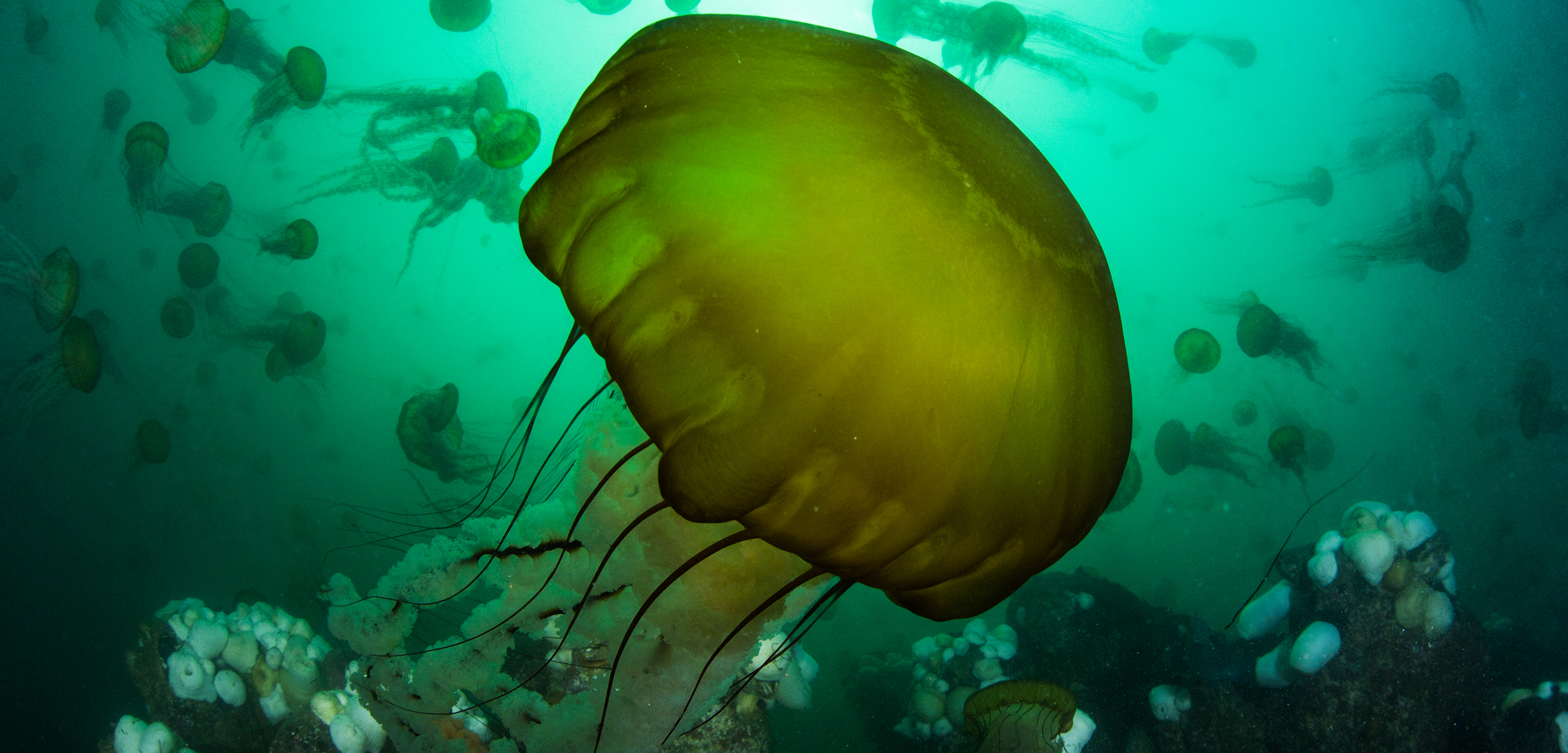
Sea jellies (aka jellyfish) are a charismatic subphylum that is familiar to all. Fossil evidence dates sea jellies as far back as 500 million years ago—if not longer. Because they are soft bodied creatures and are at least 95% water, their fossils are extremely difficult to find, but not impossible when preserved in fine sediment.
Sea jellies have a simple structure and lack almost everything that distinguishes plant from animal—including blood, a heart and a brain. They contain only a basic network of neurons that allow them to sense their environment. There are plenty of misconceptions about sea jellies, but one thing is for sure: they’re ready to take on another million years.
What sets sea jellies apart from the rest of the animals on this list is their high adaptability and predicted successful future. Because of their lack of complex features, things like temperature, salinity and acidity, which are causing the demise of so many ocean animals, are not a problem for sea jellies. In fact, warm temperatures and dead zones (areas of water with depleted oxygen) are places where sea jellies thrive; and because their natural predators (sea turtles, fish and sharks) struggle in these changing environments, their numbers will only continue to grow.
The past can be something to learn from, something we can study to protect our own future. And though things may seem grim now, there’s still hope. At Ocean Conservancy we are working on solutions to combat the turbulent times our ocean is facing, which will hopefully help to keep these fascinating creatures around for the generations to come. Donate now to support our work on Ocean Climate, Ocean Acidification, Trash Free Seas® and more.
